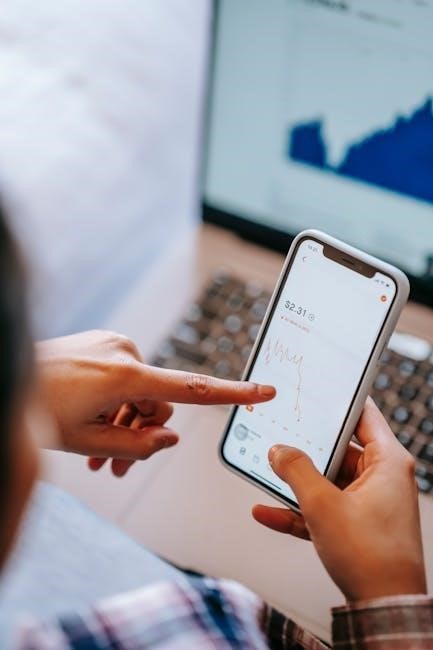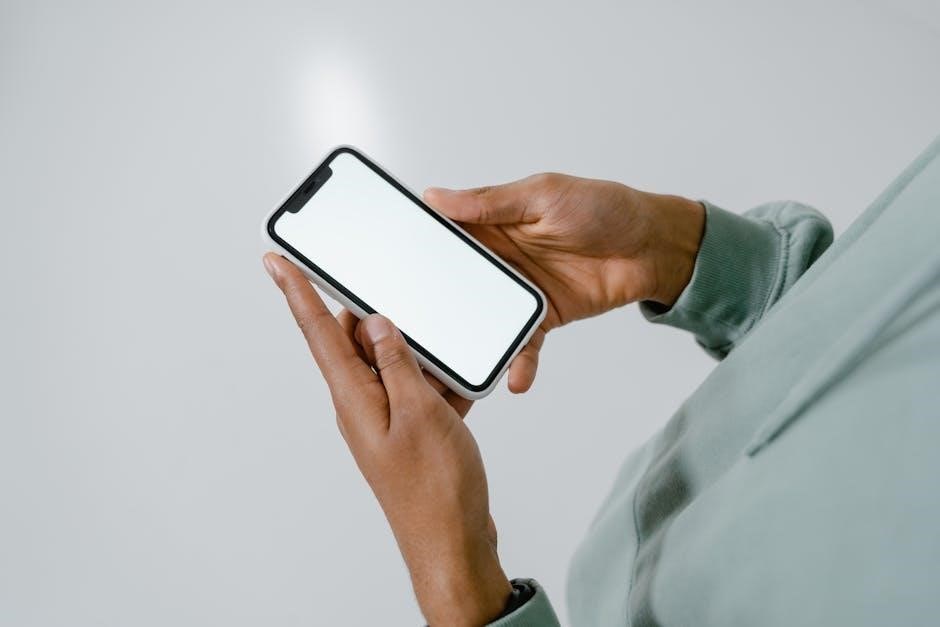Provisional Patent Application: A Comprehensive Guide
A provisional patent application is a U.S. national application filed, offering a lower-cost first patent filing. It establishes an early effective filing date for a later nonprovisional application, allowing “Patent Pending” status.
What is a Provisional Patent Application?
A provisional patent application, offered by the USPTO since June 8, 1995, serves as a cost-effective initial filing option for inventors. It establishes an early filing date in the United States, aligning U.S. applicants with international standards under the GATT Uruguay Round Agreements.
Unlike a formal patent claim, oath, declaration, or information disclosure, a provisional application provides a simpler route to secure an early priority date. It’s not examined, but it grants “Patent Pending” status, offering a 12-month window to file a corresponding nonprovisional application.
While not mandatory, it allows inventors to protect their ideas quickly and inexpensively. Filing before public disclosure (publication, use, sale) is crucial to avoid potentially losing patent rights in the U.S. and abroad.

Key Components of a Provisional Patent Application
Essential components include a written description of the invention, drawings (if necessary for understanding), and a cover sheet. While claims aren’t required, they can be beneficial to include as well.
Written Description of the Invention
The written description is a crucial component of a provisional patent application. It must comply with 35 U.S.C. 112(a), providing a clear and concise explanation of the invention. This description should enable a person skilled in the art to make and use the invention without undue experimentation. Include all essential elements and embodiments;
While formal patent claims are not required for a provisional application, a well-drafted description can significantly impact the scope of protection obtained in a later non-provisional application. Consider including at least one claim for strategic reasons. This description serves as a foundational document for establishing priority.
Drawings (if necessary)
Although not strictly mandatory, including drawings in your provisional patent application is highly recommended if they aid in understanding the invention. Refer to 35 U.S.C. 113 for drawing requirements. Drawings should clearly illustrate the invention’s features and functionality. Any drawing necessary to understanding the invention cannot be added after filing, because new subject matter is prohibited.
While the application receives a filing date regardless of drawings, their absence can lead to issues later. Ensure drawings are clear, accurate, and comply with USPTO guidelines. Consider professional assistance if you lack drafting expertise, as quality drawings strengthen your application.
Cover Sheet Requirements
A complete provisional patent application necessitates a cover sheet with essential information. This sheet identifies the applicant and invention, ensuring proper processing by the USPTO. It should include the inventor’s name(s), residence(s), and the invention’s title. Accurate inventor information is crucial, as errors can complicate later filings.
The cover sheet must also specify that the application is provisional. Failing to identify the filing as provisional may result in its treatment as a nonprovisional application, incurring higher fees and different requirements. Double-check all details for accuracy and completeness before submission to avoid processing delays or rejections.

Filing a Provisional Patent Application
You can file provisionals electronically via Patent Center or by mail. Ensure all documents (description, drawings, cover sheet) and the filing fee are included. A filing date is assigned upon receipt.
Filing Electronically via Patent Center
Patent Center is the only method for electronic provisional application filing. It offers secure internet filing, requiring documents in PDF format. The system validates PDF compatibility with USPTO systems before submission.
Fillable Patent Center forms automatically load entered data into USPTO systems, streamlining the process. Real-time payment processing is available for fee payment.
Applicants prepare documents in Portable Document Format (PDF), attach the documents, validate that the PDF documents will be compatible with USPTO internal automated information systems, submit the documents, and pay fees with real-time payment processing. When fillable Patent Center forms are used, the data entered into the forms is automatically loaded into USPTO information systems.
Further information on Patent Center is available at https://www.uspto.gov/patents/apply/patent-center.
Filing by Mail
While electronic filing via Patent Center is the preferred method, applicants retain the option to submit their provisional patent application by mail. This involves physically sending the required documents and the filing fee to the USPTO via postal service.
The application papers, which include the written description, any necessary drawings, and the cover sheet, must be carefully prepared and organized. The filing fee must be submitted in the form of a check or money order made payable to the Director of the U.S. Patent and Trademark Office.
All documents should be sent to the following address:
Commissioner for Patents
P.O. Box 1450
Alexandria, VA 22313-1450
It is recommended to use certified mail with return receipt requested to ensure proof of delivery.
Benefits of Filing a Provisional Patent Application
Filing a provisional patent application establishes an early filing date, securing priority for your invention. It grants “Patent Pending” status, signaling to others that you are pursuing patent protection.
Establishing an Early Filing Date
One of the most significant advantages of a provisional patent application is its ability to establish an early effective filing date. This date serves as a priority date for your invention, which is crucial in the competitive landscape of patent law. By securing this early date, you gain an edge over potential competitors who may be developing similar ideas.
The early filing date becomes particularly valuable if another inventor independently conceives of the same invention after you have filed your provisional application. In such a scenario, your earlier filing date would grant you priority in the patenting process. This can be a decisive factor in determining who ultimately obtains the patent rights.
Moreover, establishing an early filing date allows you to publicly disclose your invention without jeopardizing your patent rights.
“Patent Pending” Status
Upon filing a provisional patent application, you gain the right to use the term “Patent Pending” in connection with your invention. This designation serves as a public notice that you have taken steps to protect your intellectual property, signaling to potential competitors that your invention is under consideration for patent protection.
The “Patent Pending” status can be a valuable asset in various contexts. It can enhance the perceived value of your invention in the eyes of investors, potential licensees, and customers. This designation can also deter others from copying or infringing upon your invention, as it suggests that you are actively pursuing patent protection and are prepared to defend your rights.
Furthermore, the “Patent Pending” status provides you with a grace period to further develop and refine your invention.

Converting a Provisional Application to Non-Provisional
While typically a non-provisional application is filed claiming priority to a provisional application, an alternative exists: converting the provisional application itself. This is achieved by filing a petition requesting conversion under specific regulations within 12 months of the provisional application’s filing date.
However, understand the implications. Converting a provisional application negatively impacts the potential patent term. The patent term is measured from the original filing date of the provisional application, effectively shortening the potential lifespan of the patent. Filing a separate non-provisional application claiming benefit of the provisional application extends the potential patent term by up to 12 months.
Therefore, carefully consider the long-term value of patent protection when deciding whether to convert or file a new non-provisional application. Prioritize maximizing patent term unless conversion offers other compelling advantages.

Important Considerations and Deadlines
A provisional application’s pendency lasts 12 months, non-extendable. File a corresponding non-provisional application during this period to benefit from the earlier filing date; otherwise, the provisional application becomes abandoned by law.
12-Month Pendency Period
The provisional patent application has a strict 12-month pendency period from its filing date, a period that cannot be extended under any circumstances. This timeframe is crucial for inventors seeking to establish an early priority date for their inventions. To fully leverage the benefits of a provisional application, a corresponding nonprovisional patent application must be filed within these 12 months.
Failure to file a nonprovisional application within this window results in the abandonment of the provisional application and the loss of its priority date. The United States Patent and Trademark Office (USPTO) emphasizes the importance of adhering to this deadline to maintain patent rights.
While a nonprovisional application filed slightly late (within 14 months) might have its benefit restored with a petition, strict adherence is always recommended to avoid complications and ensure a seamless patent process. The 12-month period is a critical consideration for all inventors utilizing the provisional application pathway.
Filing a Non-Provisional Application
To capitalize on the early filing date established by a provisional patent application, a non-provisional application must be filed. This non-provisional application serves as the formal document that undergoes examination by the USPTO. It requires detailed claims defining the invention’s scope, an oath or declaration by the inventor, and potentially, an information disclosure statement.
The non-provisional application must explicitly claim priority to the earlier-filed provisional application within a specific timeframe. For applications filed after September 16, 2012, this reference should be in the application data sheet; Remember the non-provisional application must be filed within 12 months of the provisional application’s filing date to secure the benefit of the earlier filing date.
Filing a non-provisional application is a crucial step toward obtaining a patent and requires careful preparation and adherence to USPTO guidelines. Failing to meet the deadlines or requirements can jeopardize the patent rights.
